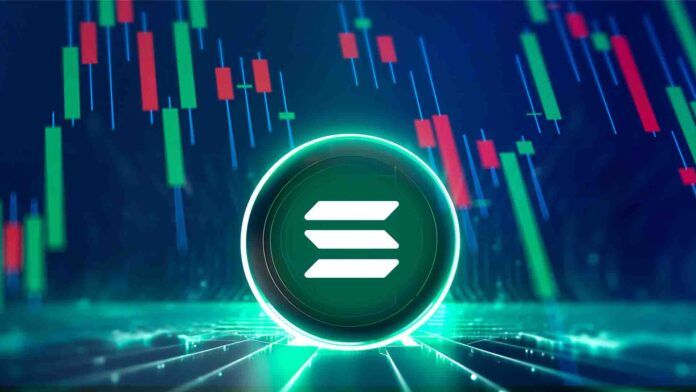Despite SOL’s price dropping 9% between March 28 and April 4, Solana’s ecosystem metrics demonstrate surprising resilience and growth. The network’s total value locked (TVL) has climbed to 53.8 million SOL on April 2, marking a 14% increase from the previous month and reaching levels not seen since June 2022. This growth comes at a time when many would expect weakness across the board, particularly as a significant staking unlock of 1.79 million SOL (worth over $200 million) occurred on April 4, creating natural selling pressure from early investors who had staked their tokens in April 2021 when SOL traded near $23.
Solana has firmly established itself as the second-largest DeFi ecosystem with $6.5 billion in total value locked, maintaining a $780 million lead over its closest competitor, BNB Chain. This position is reinforced by strong performance in decentralized exchange (DEX) volumes, where Solana commands a 24% market share compared to BNB Chain’s 12% and Base’s 10%. The network has demonstrated remarkable resilience following the memecoin bubble burst, with platforms like Jito (liquid staking), Jupiter (DEX), and Kamino (lending) leading in TVL contributions. This ecosystem strength persists despite the broader decline in memecoin activity, which had previously been a major driver of new user adoption on the network.
While Ethereum still dominates the overall DeFi landscape with approximately $50 billion in TVL, Solana’s focus on base layer scalability and integrated Web3 user experience continues to attract developers and users alike. However, challenges remain, including concerns around maximum extractable value (MEV) – the practice of validators reordering transactions for profit – and debates about token emissions and network incentives. Some critics point to potential insider gatekeeping and validator advantages, while others advocate for encrypting transactions before they enter the mempool to prevent manipulation. Despite these ongoing discussions and SOL’s current price weakness, the network’s fundamentals suggest a potential divergence that could eventually resolve with upward price movement, though a retest of the $200 level seen in mid-February remains uncertain in the immediate term.





